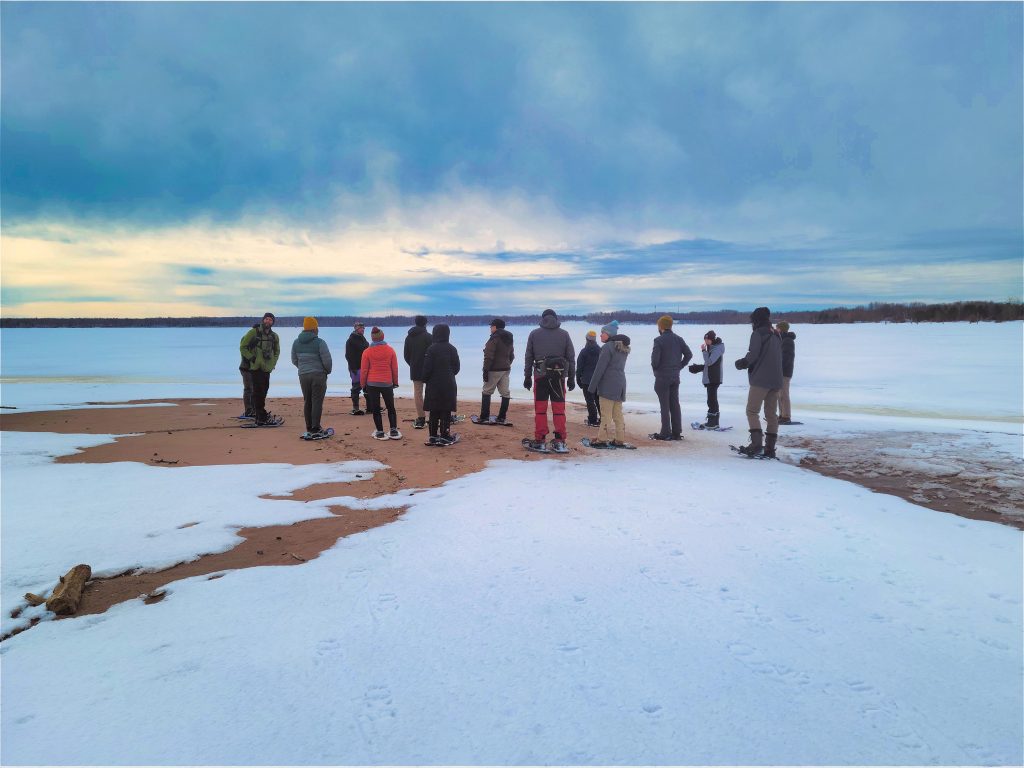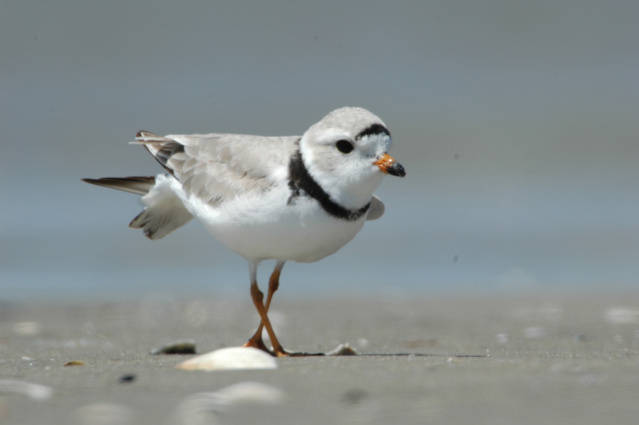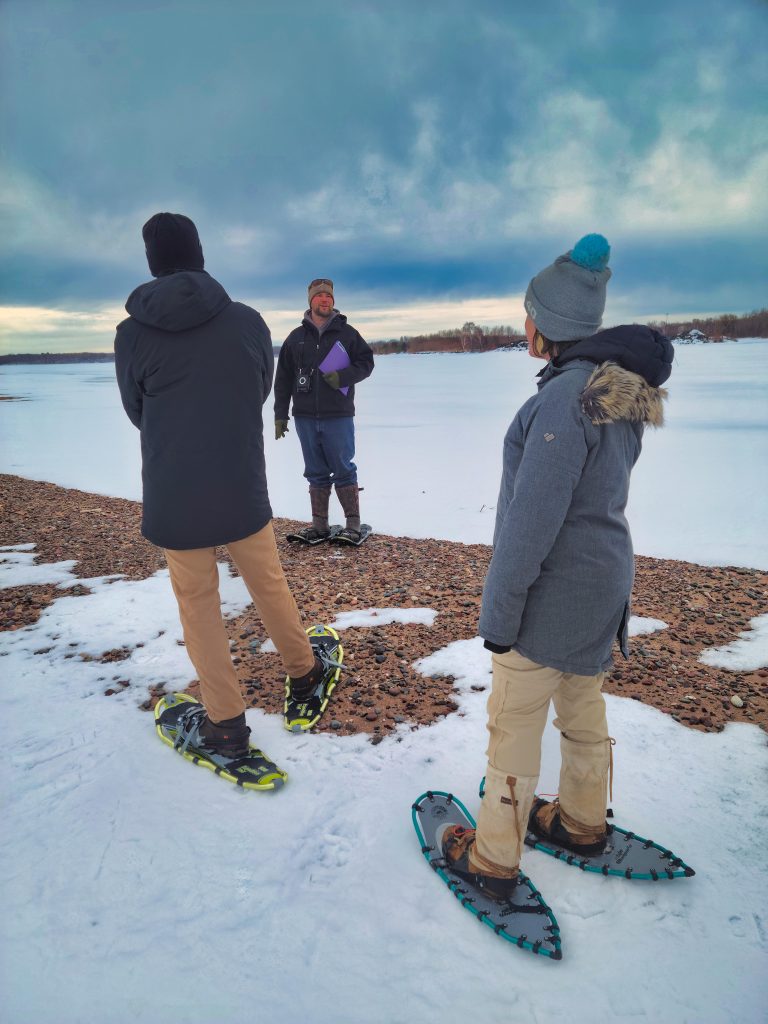Wild ricing in the St. Louis River Estuary: An immersive experience
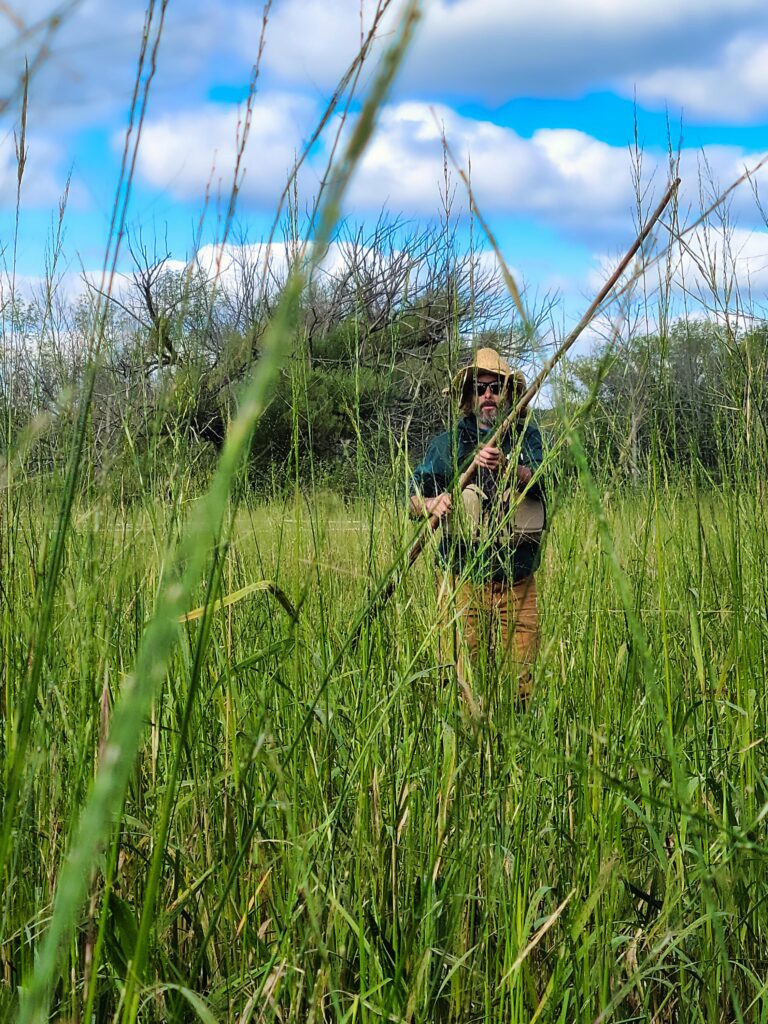
David Grandmaison, Wisconsin Dept. of Natural Resources, poles through a wild rice bed in the St. Louis River. Image credit: Marie Zhuikov, Wisconsin Sea Grant
A co-worker and I were invited to attend a day of Manoomin (Wild Rice) Camp on the St. Louis River in Duluth, Minnesota. The camp flier said, “Join us in a guided paddle to the wild rice restoration sites and welcome manoomin back to Gichi Gami Ziibi (the St. Louis River). Try your hand at harvesting and experience each step in the finishing process (drying, parching, jigging and winnowing).”
That sounded good to us, so with wild rice harvesting permits in hand, we met in the Fond du Lac neighborhood of Duluth near the Wisconsin border. The event was hosted by the 1854 Treaty Authority, the Wisconsin Department of Natural Resources (WDNR), the Lake Superior National Estuarine Research Reserve and The Nature Conservancy in an area that had been seeded with wild rice three or four years previously.
We were met by Marne Kaeske, cultural preservation specialist with the 1854 Treaty Authority, Martha Minchak and David Grandmaison, St. Louis River wild rice and habitat restoration coordinator with the WDNR. After a sage smudging ceremony and a chance to offer tobacco to the river as the Ojibwe do, they gave us a brief orientation to where the rice bed was located and how to harvest it.
“The rice needs us and we need the rice,” said Minchak, a retired Minnesota Department of Natural Resources wildlife manager. “In places where it’s not harvested anymore, it’s disappeared. Kind of like sweet grass, it needs to be pulled up and picked. Rice needs to be harvested to reseed itself. We’re here to celebrate that today.”
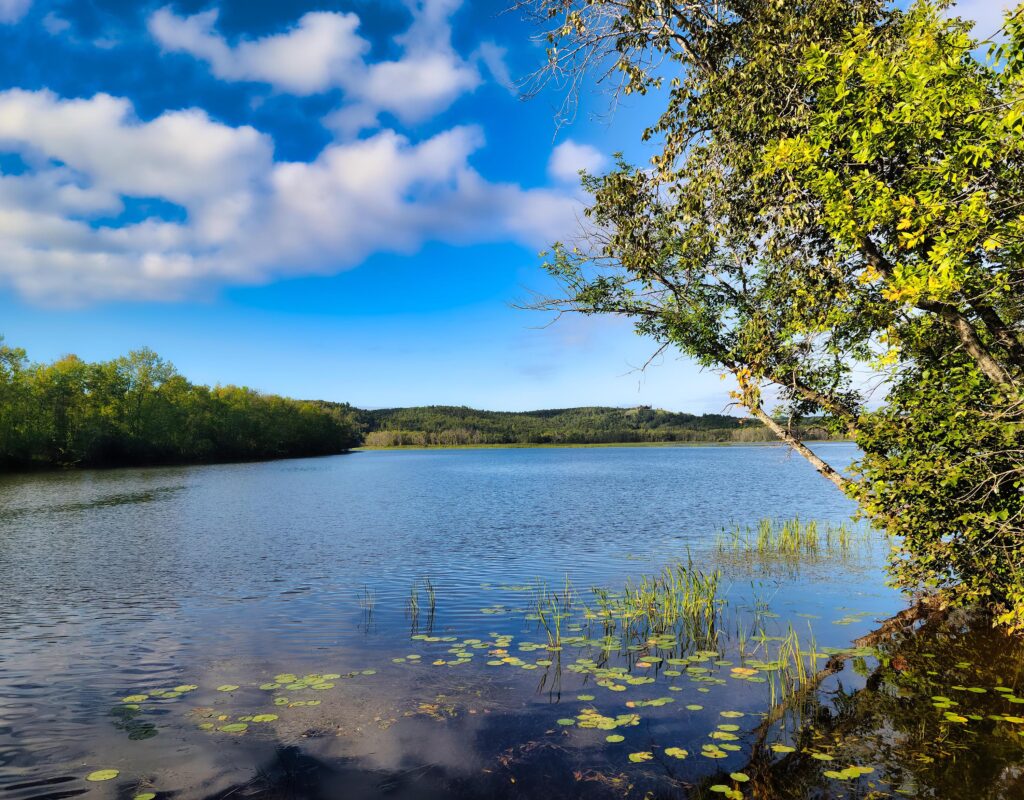
The St. Louis River. Image credit: Marie Zhuikov, Wisconsin Sea Grant
Under a blue sky and calm winds, my co-worker (who shall remain nameless for reasons that will become clear soon) and I clambered into our canoe with our life jackets, a pair of rice knocking sticks and long pole. We paddled toward the wild rice bed where Grandmaison was stationed in a motorboat and kayak to aid us ricers. We spotted a gleaming white pair of trumpeter swans and we watched as a small kettle of hawks circled overhead.
We must have not done our opening ceremonies correctly, because things did not go as planned. I was in the bow of the canoe and my job was to use the rice knockers to coax the rice seeds off the plants. My co-worker was in the stern to pole us through the rice bed. That all went fine, for a while.
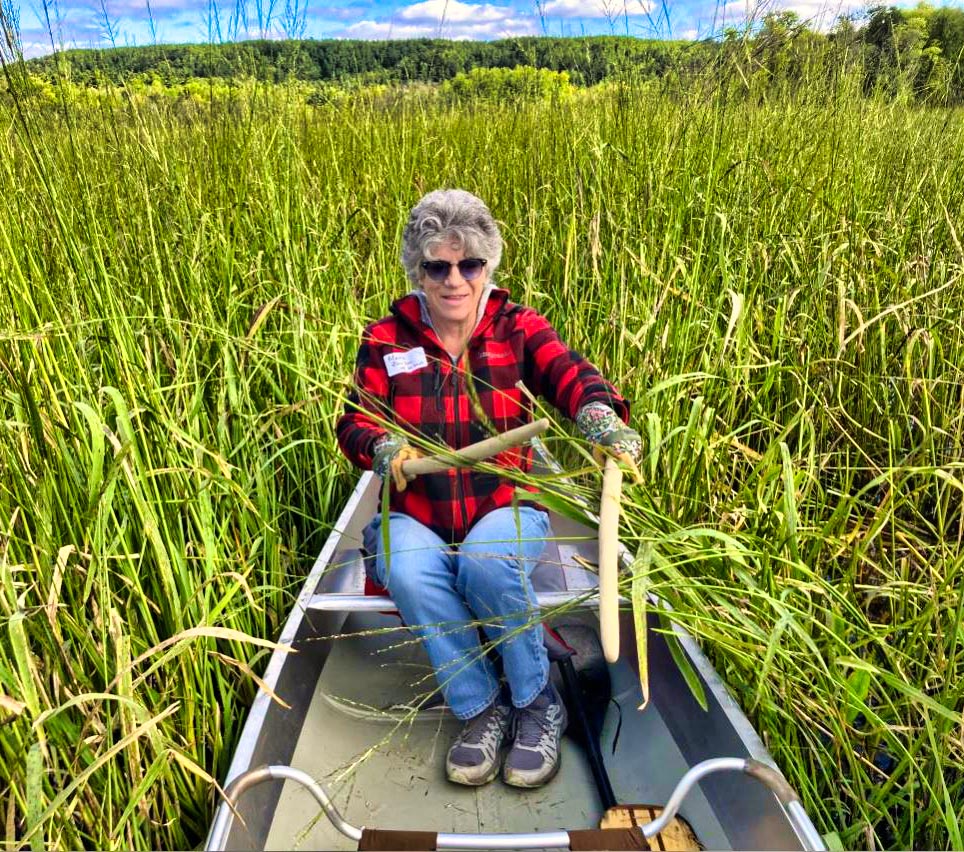
Marie uses rice knockers to harvest wild rice in the St. Louis River. Image credit: Sharon Moen, Wisconsin Sea Grant
The soft swishing sounds of the aluminum canoe pushing through the thick rice stand combined with the gentle patter of rice seeds falling into it as I gently bent the rice with one knocker and used the other to tap the plants was soothing. The rice stand had already been visited by other groups earlier in the week. That, combined with a heavy rain the day before, made for a sparse harvest. Still, oblong seeds with long grassy tails slowly filled the bottom of our canoe. Some of the seeds were purple, others were tan. A small sora rail flushed several times as we passed. This secretive water bird needs marshes and rice beds as nesting habitat.
My co-worker began poling us through the shallow rice bed sitting down at first. Then she stood for the task, which is how it is traditionally done. As the manoomin continued accumulating in our canoe, the push pole got stuck in the soft muck and she lost her balance.
Into the chilly river we went, rice and all!
Our shouts of surprise and splashes as we struggled to stand in the deep muck alerted Grandmaison to our plight. He paddled over in his kayak and tied a rope onto our swamped canoe. My co-worker and I waded through the waist-deep water, holding onto the canoe through the wild rice beds until we reached shore, which was about 100 yards away.
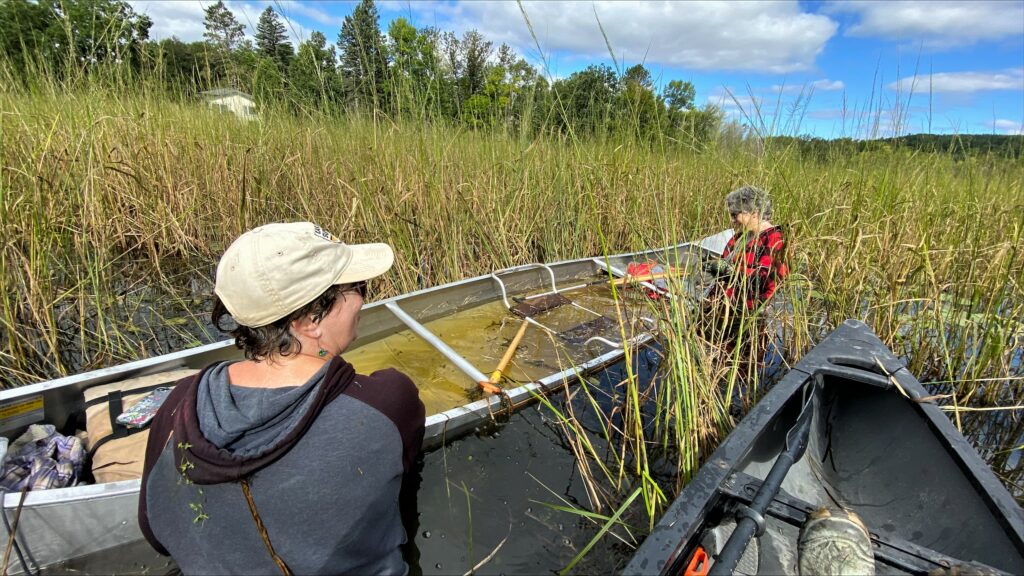
The swamped ricing canoe. Image credit: David Grandmaison, Wisconsin Department of Natural Resources
There, we were able to tip the canoe over and empty most of the water (and any wild rice that remained). We took it all in good stride, however, laughing at our plight and commenting about what a good story this would make. I thought up the title of this blog post on the spot. There’s nothing like a real-life experience to provide creative inspiration!
Our misadventure was also probably good for the rice bed. Wild rice is an annual plant and as Minchak mentioned, it needs to be seeded every year to prosper. We just dumped a whole lot of seeds back into the river for next year. Maybe that’s what the wild rice gods wanted us to do?
We were worried about our cell phones and other electronic devices that spent a short time in the water. But our phones, at least, seemed functional.
Cold and wet, my co-worker and I decided we’d had enough ricing for the day. We paddled back to the landing and emptied the remaining water from the canoe, pulling it on land and turning it over.
From the time we overturned in the rice bed to the time we reached the landing we’d been wet for two hours. We headed home for warm, dry clothes. We would miss the rice processing demonstration and a wild rice-themed meal. We were disappointed to cut the experience short.
However, I happened to have a special lunch awaiting me at home: wild rice soup. I swear, I did not plan that. I just worked out that way.
My co-worker and I certainly got “immersed” in the process of harvesting wild rice. The experience was memorable and was not one we could have had only a few years ago, before efforts to restore rice took off in the estuary.
But if we ever do it again, I’m going to volunteer to be the poler.
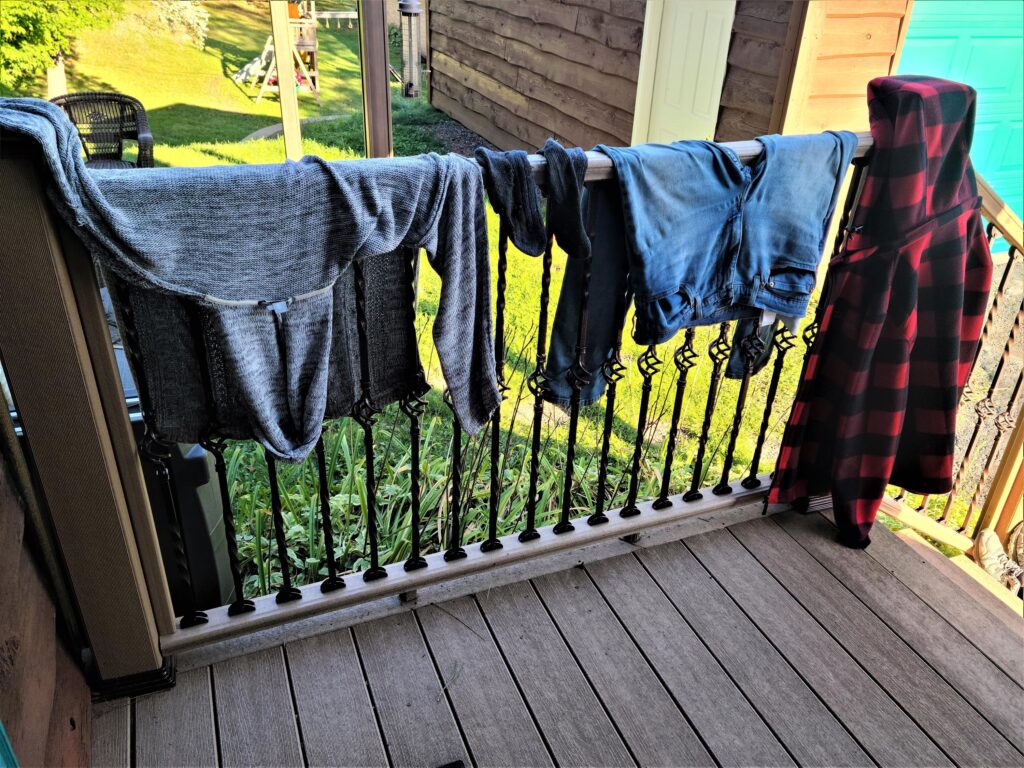
Marie’s clothes drying out at home. Image credit: Marie Zhuikov, Wisconsin Sea Grant
Blog | Wisconsin Sea Grant
https://www.seagrant.wisc.edu/blog/wild-ricing-in-the-st-louis-river-estuary-an-immersive-experience/

